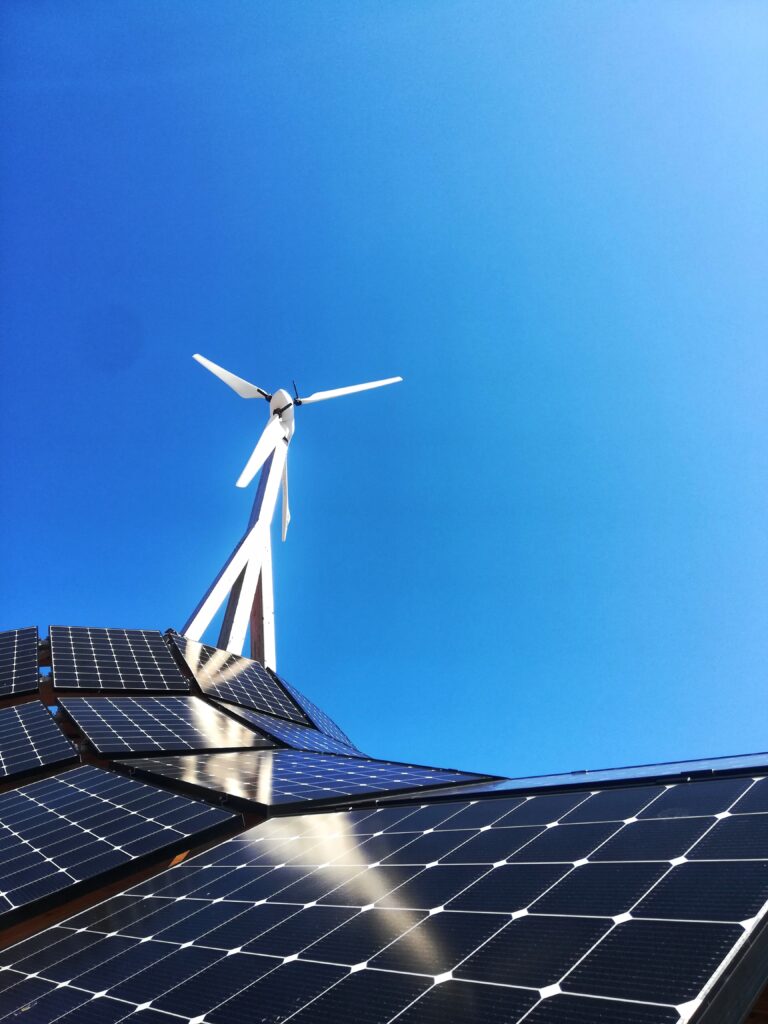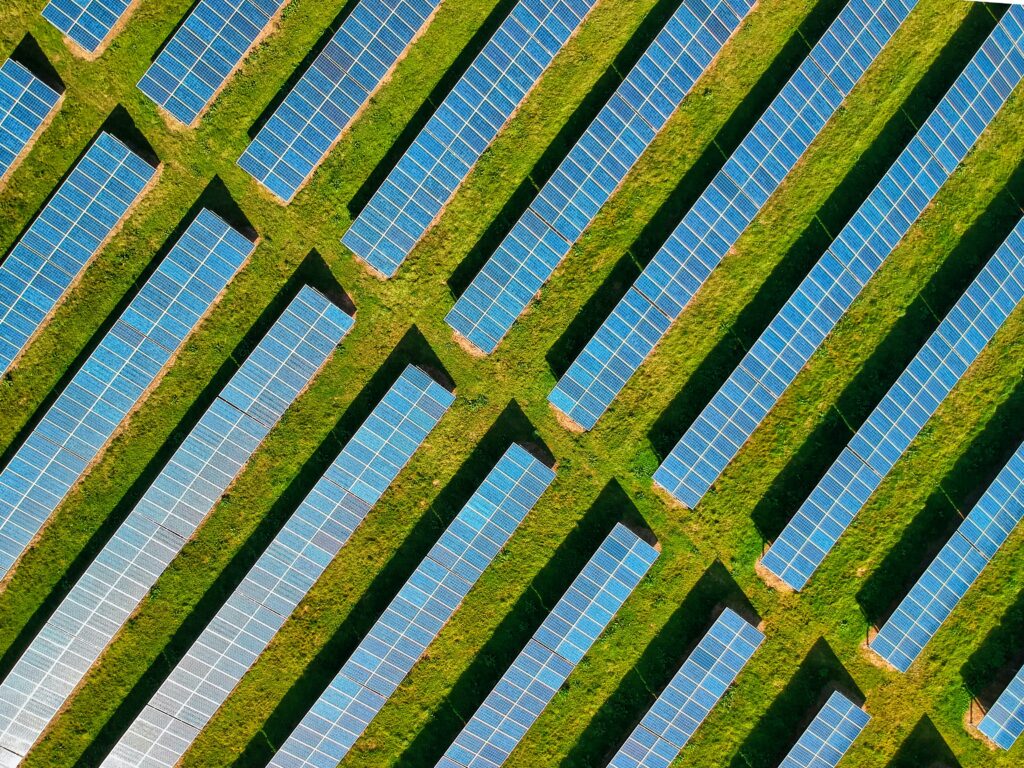Imagine harnessing the power of the moon to fuel your solar panels. It sounds like something out of a sci-fi movie, but could it actually be possible? In this article, we will explore the fascinating question of whether moonlight can effectively generate electricity for solar panels. Strap on your space helmet and get ready for a lunar journey filled with innovation and possibilities.

Understanding The Basics of Solar Panels
Solar panels are devices that convert sunlight into usable electricity through a process called photovoltaics. This innovative technology has gained widespread popularity in recent years due to its renewable and clean energy source. By harnessing the power of the sun, solar panels offer a sustainable solution for meeting our energy needs while mitigating the harmful effects of traditional fossil fuel-based energy production.
How solar panels work
Solar panels consist of several key components that work in harmony to generate electricity. The heart of a solar panel is the photovoltaic (PV) cells, which are made from semiconducting materials such as silicon. When sunlight hits these PV cells, the photons in the sunlight excite the electrons in the material, creating an electric current. This direct current (DC) is then converted into usable alternating current (AC) electricity through an inverter, enabling it to power our homes, businesses, and daily lives.
Components of a solar panel
Besides the PV cells, solar panels also consist of other essential components that optimize its energy production. Among these components are the glass surface, which protects the PV cells from external elements while allowing sunlight to pass through, and the frame that provides structural support to the panel. Additionally, the junction box acts as a connection point for wiring and ensures the safe transmission of electricity. These components work together seamlessly to create an efficient solar panel system.
The role of sunlight in solar energy production
Sunlight is the primary source of energy for solar panels, and its abundance and accessibility make it an ideal energy resource. When sunlight reaches the surface of a solar panel, it is absorbed by the PV cells, initiating the photovoltaic process. The intensity and duration of sunlight directly impact the amount of electricity generated by a solar panel.
The Concept of Moonlight
While the sun is undeniably the dominant celestial body when it comes to powering solar panels, it raises the question of whether moonlight can also be harnessed to generate electricity. To understand the potential of moonlight as an energy source, it is crucial to explore its characteristics and differences compared to sunlight.
Understanding moonlight
Moonlight is, simply put, the reflection of sunlight off the moon’s surface. Unlike sunlight, which is produced by the intense nuclear fusion reactions occurring within the sun, moonlight has a much dimmer and more diffused nature. Moonlight provides an ethereal glow during the night, creating a calm and serene atmosphere.
Difference between sunlight and moonlight
The most apparent difference between sunlight and moonlight lies in their brightness and intensity. Sunlight is incredibly intense, providing a significant amount of energy that can be harnessed by solar panels. On the other hand, moonlight is much fainter, reflecting only a fraction of the sun’s energy. This reduced brightness and intensity pose significant challenges in harnessing moonlight as a viable energy source.
How moonlight is produced
Moonlight is produced when sunlight strikes the moon’s surface, causing it to reflect back towards Earth. The moon acts as a mirror, reflecting the sun’s light and casting a softer glow on our planet. However, since the moon lacks an atmosphere to scatter and amplify light like our planet, moonlight appears significantly weaker when compared to sunlight.
Can Solar Panels Harness Moonlight?
Given the dimmer nature of moonlight, it begs the question of whether solar panels can effectively harness this more subdued light source as well. While the technological advancements in solar panel technology have been remarkable, there are limitations to consider when it comes to utilizing moonlight for energy production.
Moonlight’s potential for energy production
In theory, solar panels could generate a small amount of electricity using moonlight. However, the reduced brightness and intensity of moonlight make it challenging to extract a significant amount of energy compared to sunlight. The low lumens of moonlight present a hurdle in efficiently converting it into usable electricity.
Limitations of moonlight
One notable limitation of moonlight is the vastly reduced energy density when compared to sunlight. Moonlight provides only a tiny fraction of the energy output of sunlight. Additionally, moonlight is not consistent throughout the lunar cycle, varying in brightness and availability based on the phases of the moon. These limitations make it challenging to rely solely on moonlight for energy production.
Experiments around moonlight and solar energy
Although moonlight may not currently be a practical option for solar power, researchers have conducted experiments to explore the possibilities. Some studies have attempted to increase the power output from solar panels by using designs optimized for moonlight conditions. These experiments aim to enhance the efficiency of solar panels and maximize their energy collection potential, even under low-light conditions.
Why Moonlight is not a viable option for Solar Power
While there have been efforts to explore the potential of harnessing moonlight for solar energy, several factors contribute to its impracticality as a reliable energy source.
Impact of reduced brightness and intensity of moonlight
The primary obstacle in effectively harnessing moonlight lies in its diminished brightness and intensity. The energy present in moonlight is significantly lower than that of sunlight. This reduction in energy output restricts the amount of electricity that can be generated, limiting the overall viability of moonlight as a substantial energy source.
Effect of moon phases on moonlight availability
Another significant factor to consider is the effect of moon phases on moonlight availability. Moonlight varies throughout the lunar cycle, with the brightness fluctuating depending on the moon’s position relative to the sun and Earth. During the new moon phase, moonlight is virtually nonexistent, rendering it unable to power solar panels. This intermittency further diminishes the reliability and practicality of moonlight as a sustainable energy source.
Comparing energy output from sunlight and moonlight
Directly comparing the energy output from sunlight and moonlight highlights the vast disparity between the two sources. Sunlight produces approximately 100,000 lux while moonlight only emits around 0.1 lux. This stark difference underscores the immense challenge in fully harnessing moonlight’s limited energy potential.

Components Responsible for Energy Collection in Solar Panels
To better understand the limitations faced in harnessing moonlight for solar power, it is essential to delve into the components responsible for energy collection in solar panels and their role in optimizing energy production.
On semiconductors and photovoltaic cells
Semiconductors, typically made from silicon, form the basis of photovoltaic cells in solar panels. These cells are designed to convert sunlight into electricity through the photovoltaic effect. However, the architecture and materials used in current solar panel technology are primarily optimized for harnessing sunlight. The semiconductors’ properties, including their bandgaps and absorption coefficients, are tailored for maximum efficiency under high-intensity sunlight, making them ill-suited for moonlight utilization.
Limitations of current solar panel technology in harnessing moonlight
As mentioned earlier, the reduced brightness and intensity of moonlight significantly impact solar panel performance. The current design parameters of solar panels, including their materials, structure, and cell configurations, are optimized for high-energy solar radiation. Consequently, the limitations of current solar panel technology pose significant challenges in capturing and utilizing the lower energy levels found in moonlight.
New trends in solar panel technology
Despite these limitations, the field of solar panel technology is constantly evolving and advancing. Researchers are actively exploring innovative materials and mechanisms to improve the efficiency of solar panels. One such trend is the development of perovskite solar cells, which have shown the potential to enhance energy collection under low-light conditions. Harnessing these emerging technologies may pave the way for improved solar panel efficiency and the possibility of harnessing moonlight in the future.
Potential Research and Innovations
Given the increasing interest in renewable energy and the need for sustainable solutions, research and innovation in the field of solar energy are crucial. Several ongoing developments show promise in improving solar panel efficiency and expanding the potential for harnessing moonlight as a viable energy source.
Developments in solar panel efficiency
Scientists and engineers are continuously working on improving the efficiency levels of solar panels. From advancements in the quality of semiconductors to reducing energy losses during conversion processes, these developments aim to enhance energy collection and maximize power output even under challenging light conditions such as moonlight.
Potential for specialized solar panels that can harness moonlight
Another avenue of research involves designing specialized solar panels specifically tailored to harness moonlight. By optimizing the materials, structure, and configuration of these panels for low-light conditions, researchers hope to overcome the limitations associated with moonlight and increase energy production. These specialized solar panels could offer an alternative energy source where sunlight is limited or unavailable.
Current scientific research around solar panel and moonlight
Various scientific studies are currently underway to explore the potential relationship between solar panels and moonlight. These research initiatives aim to deepen our understanding of moonlight’s characteristics, assess its viability as an energy source, and identify possible techniques to optimize solar panel performance in low-light conditions. By bridging the gap between scientific knowledge and practical application, these studies play a vital role in shaping the future of solar energy utilization.

Study Cases of Moonlight Powered Solar Panels
While moonlight may not be a dominant energy source for solar panels, some study cases have successfully demonstrated the possibility of using moonlight as a supplemental energy resource.
Successful instances of using moonlight
In a pioneering study conducted in 2019, researchers from the University of California, Davis, developed an innovative solar panel prototype that offered increased efficiency under moonlight conditions. By incorporating a reflective silver coating, the panel was able to capture and focus moonlight, significantly enhancing energy collection during nighttime. Although this breakthrough only resulted in a marginal increase in power output, it represents a significant step towards harnessing moonlight more effectively.
Facts and figures from studies
While current research into moonlight-powered solar panels is limited, initial data show mixed results. Studies have indicated that the power output from moonlight can range from a few milliwatts to a maximum of a few watts per square meter. While these figures may seem encouraging, it is crucial to note that they still fall far short of the energy production capabilities of solar panels under sunlight conditions.
Implications of these studies
The study cases exploring the possibility of using moonlight to power solar panels provide valuable insights into the potential capabilities and limitations of these systems. While the results may indicate progress, it is clear that moonlight cannot currently serve as a primary energy source for solar panels. Nonetheless, these studies contribute to the overall body of knowledge, paving the way for further research and innovative solutions in the field.
Challenges in Harnessing Moonlight for Solar Power
Several challenges stand in the way of harnessing moonlight as a practical and reliable energy source for solar power.
Technical challenges
One of the primary technical challenges lies in developing solar panel technology that can effectively capture and convert the limited energy available in moonlight into a usable form. The semiconductors and materials used in current solar panel designs are optimized for high-energy sunlight, making them ill-equipped to handle the much lower energy levels present in moonlight. Overcoming these technical barriers is essential for enabling efficient energy production using moonlight.
Economic implications of using moonlight for power
From an economic perspective, the cost-benefit analysis of utilizing moonlight for solar power becomes a significant consideration. The investment required to develop specialized solar panels capable of leveraging moonlight may outweigh the potential benefits, especially considering the limited energy output and intermittent availability of moonlight. Balancing the economic viability with the sustainability benefits becomes a critical factor in determining the practicality of moonlight-powered solar panels.
Environmental implications
While solar energy, in general, is considered an environmentally friendly alternative to traditional energy sources, the environmental implications of harnessing moonlight require further examination. The energy density and availability of moonlight are considerably lower than sunlight, which means that a larger area of land would be required to generate the same amount of electricity. This expansion of solar panel infrastructure may have unintended consequences on wildlife habitats and ecosystems, necessitating thorough environmental impact assessments.
Differences in Sun and Moon Activated Solar Panels
The comparison between solar panels activated by sunlight and those activated by moonlight reveals significant differences in terms of intensity, energy output, and practicality.
Intensity differences
The intensity difference between sunlight and moonlight is the most striking contrast. Sunlight, being exponentially brighter and more intense, allows for high-energy conversion and consequent efficient electricity generation. In contrast, moonlight’s subdued brightness and intensity limit the energy that can be harvested and thus significantly impact the performance of solar panels.
Energy output comparison
Directly comparing the energy output of solar panels activated by sunlight and moonlight reveals a substantial disparity. Sunlight, with its high energy density, allows for the generation of a significant amount of electricity, enabling widespread implementation of solar energy systems. Moonlight, with its considerably lower energy levels, can only produce a fraction of the power output achieved under equivalent sunlight conditions. This discrepancy in energy output solidifies the inability of moonlight to fulfill the energy demands required for most applications.
Viability and practicality comparison
When considering the practicality and viability of solar panels activated by sunlight and moonlight, sunlight clearly emerges as the more feasible option. The consistency and abundance of sunlight, coupled with the significantly higher energy output, make it the preferred choice for meeting our energy needs. While moonlight-powered solar panels may have niche applications or serve as supplemental energy sources, their limited energy potential and intermittent availability limit their viability for widespread adoption.
Future of Solar Energy: Beyond Moonlight
As the world’s energy demands continue to rise, the future of solar energy holds significant potential for meeting these needs sustainably. While moonlight may not be a viable primary energy source, advancements in solar panel technology and the exploration of alternative energy capture mechanisms offer exciting possibilities.
Investments in solar energy research
Governments, organizations, and private entities are investing heavily in solar energy research, recognizing its potential as a renewable and clean energy source. These investments aim to develop and improve solar panel efficiency, energy storage solutions, and grid integration capabilities. By fostering technological breakthroughs, research initiatives accelerate the transition towards a future powered by sustainable solar energy.
Future technologies in solar energy harnessing
Emerging technologies such as perovskite solar cells, tandem solar cells, and organic photovoltaics hold promise for revolutionizing solar panel design and energy capture. These technologies aim to enhance efficiency, reduce costs, and expand the range of light conditions under which solar panels can generate electricity. While the focus primarily remains on optimizing sunlight utilization, these advancements may pave the way for more efficient energy collection from moonlight in the future.
The environmental and economic potential of future solar energy
Solar energy possesses vast environmental and economic potential for the future. As technology and innovation continue to drive advancements, solar panels become more accessible, efficient, and cost-effective. With increased solar energy deployment, we can significantly reduce greenhouse gas emissions, combat climate change, and create a more sustainable and resilient energy grid. Additionally, harnessing the power of solar energy offers economic benefits, such as job creation, improved energy security, and reduced reliance on fossil fuels.
In conclusion, while moonlight-powered solar panels may seem like an intriguing concept, the limitations posed by the reduced brightness, intensity, and availability of moonlight make it an impractical primary energy source. Current solar panel technology, optimized for high-energy sunlight, faces challenges in effectively harnessing the much lower energy levels present in moonlight. However, ongoing research and innovations in solar panel design and emerging technologies hold the promise of increased efficiency and expanded energy capture capabilities. Solar energy, primarily driven by sunlight, remains the primary focus for meeting our energy needs in a sustainable and environmentally friendly manner. With continued investments in research and advancements in solar technology, the future of solar energy holds the potential to revolutionize the global energy landscape.




